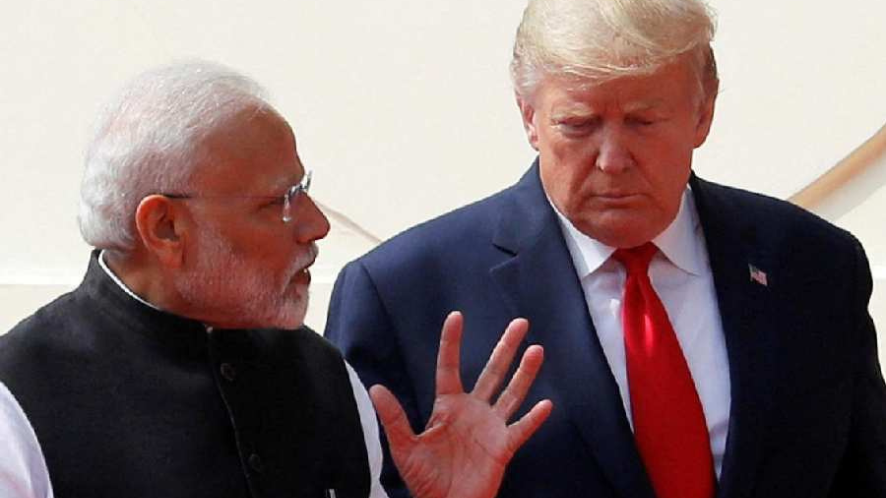US president Donald Trump announced a heavy tariff of 25% on Indian exports to USA and then increased it to 50% as a penalty for importing oil from Russia. With this India joined Brazil as countries with highest tariff on US exports. US can have its own logic and interest and they have full right to do so. Unfortunately, India has been on the receiving end at this time. US is our biggest export market, and it will definitely have an impact on our exports and GDP. Following table shows how important is US for our export market:
Indian Exports in 2024, top 5 countries
Amount in USD Billion
| Country | Amount of export | % of total export |
| USA | 79.44 | 18.00 |
| UAE | 37.10 | 8.60 |
| Netherlands | 24.22 | 5.60 |
| Singapore | 15.62 | 3.60 |
| China | 14.90 | 3.50 |
Source: https://tradingeconomics.com/india/exports-by-country
Surely, India will be active on diplomatic front to convince US not to do so, however, if US feels that it serves their interest, let it be. India is big enough not be guided by any other country about its export or import policies. It is the question of sovereignty vs business. A major blow will be to MSME sector that is not very robust as far as their balance sheets are concerned.However, with this pessimism, we must understand that the business impact will not be 50% as tariff is imposed on other countries also and competitive impact on our goods will be normally to the extent of the difference of tariff on us and tariff on our competitive country for a particular good.
Tariff on India and other Asian Competitors
| Country | Tariff |
| India | 50% |
| Syria | 41% |
| Myanmar | 40% |
| China | 30% |
| Bangladesh, Sri Lanka, Taiwan, Vietnam | 20% |
| Pakistan, Thailand, Indonesia, Philippines, Cambodia | 19% |
| Afghanistan, Turkey, Japan, South Korea, Israel | 15% |
| Qatar, Saudi Arabia, UAE | 10% |
Source: https://www.theglobalstatistics.com/united-states-import-tariffs-by-country
The Govt of India or the exporters will have to bear the burnt to the extent of Gap in tariff.
However, it is likely that 50% tariff may not carry for long and US may revise it downwards due to the following reasons:
- Increase in tariff will be partially passed on to the US customers making goods costly in US. There may be public outrage due to inflation, forcing the US Government to give a relook on tariffs.
- The extra 25% tariff on India is put due to oil import from Russia. If there is deal between US and Russia, additional 25% tariff on India may also be rolled back.
- Countries may start looking for better options then exporting to US if it continues to be costly, hurting US interest.
- India is a major country, and US also will not prefer to continue with this tariff rate, finally diplomatic channels will do their job.
However, in the event of continuation of tariffs, India and Indian exporters will have the following options to cut the losses:
- Government may provide subsidy to exporters to the extent of tariff gap with the competitive countries less price passed on to the consumers. For example, for a particular export the most competitive country is Taiwan whose tariff is 20% and around 10% tariff is passed on to the US customers then subsidy may be (50-20-10 =20%).
- Alternatively, India Govt may also reduce tariff on imports from US and then take up with US to reduce the reciprocal tariff on Indian exports.
- India must start aggressively approaching other nations, concentrating on third world countries where competition will be less to compensate the tariff loss to a certain extent.
- Approaching a few rich countries like Saudi Arabia, Australia, France, Canada etc where there is a scope to increase the export, on the lines on India-UK deal.
- Indian MSME sector has to firm up its Compliance, ESG and Risk Management to be at par with foreign counterparts, that will enhance the acceptance of Indian goods in many countries.
Finally, to conclude, the US tariff is a considerable threat to Indian business but with opportunities and alternatives. As Anand Mahindra, Chairman Mahindra group pointed out
“India to turn the ongoing global tariff upheaval into an opportunity akin to the transformative economic reforms of 1991.”
Discover more from At Silly Point
Subscribe to get the latest posts sent to your email.

